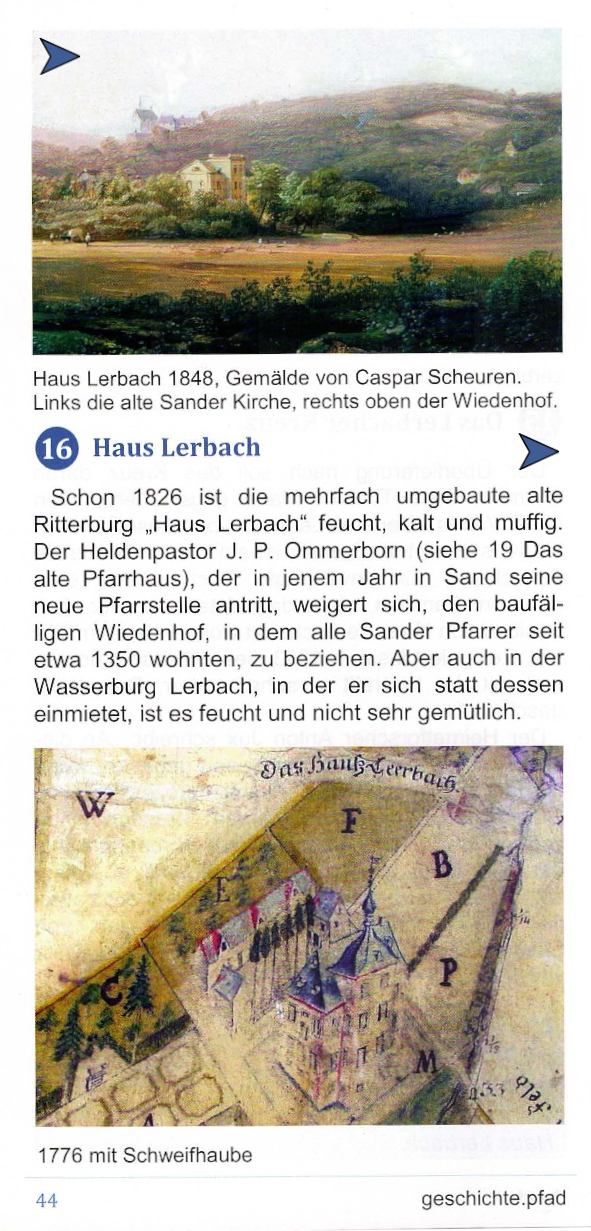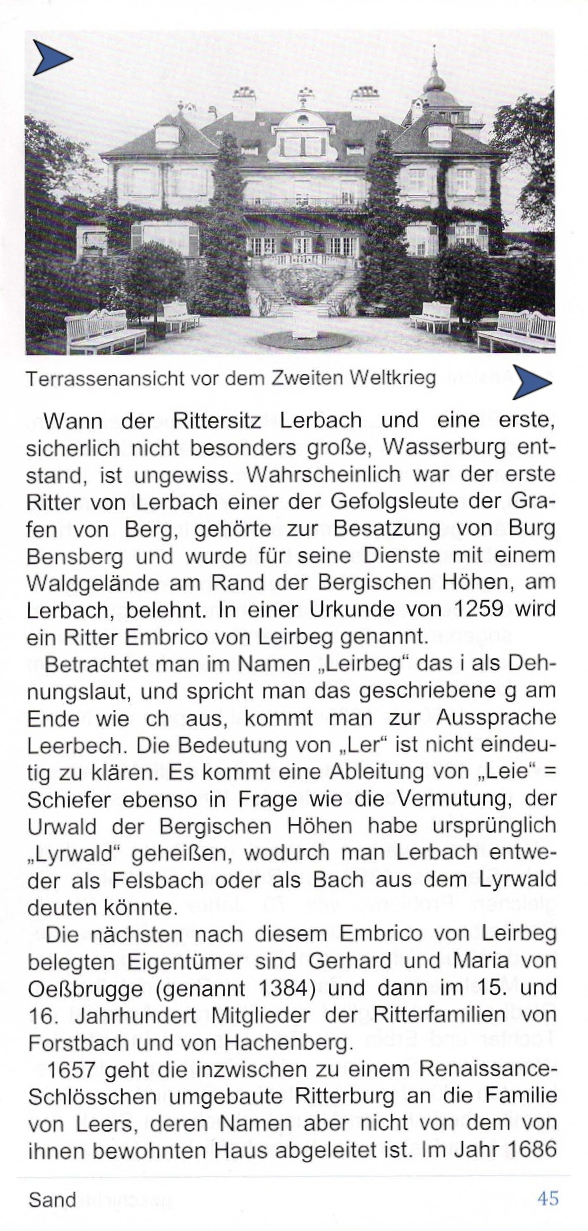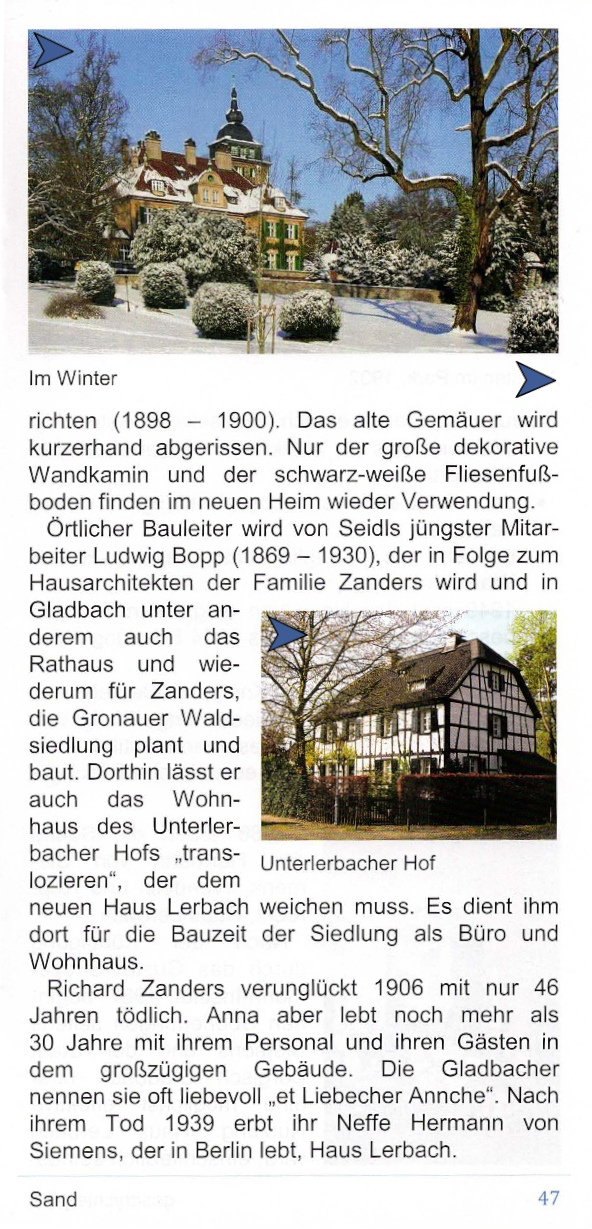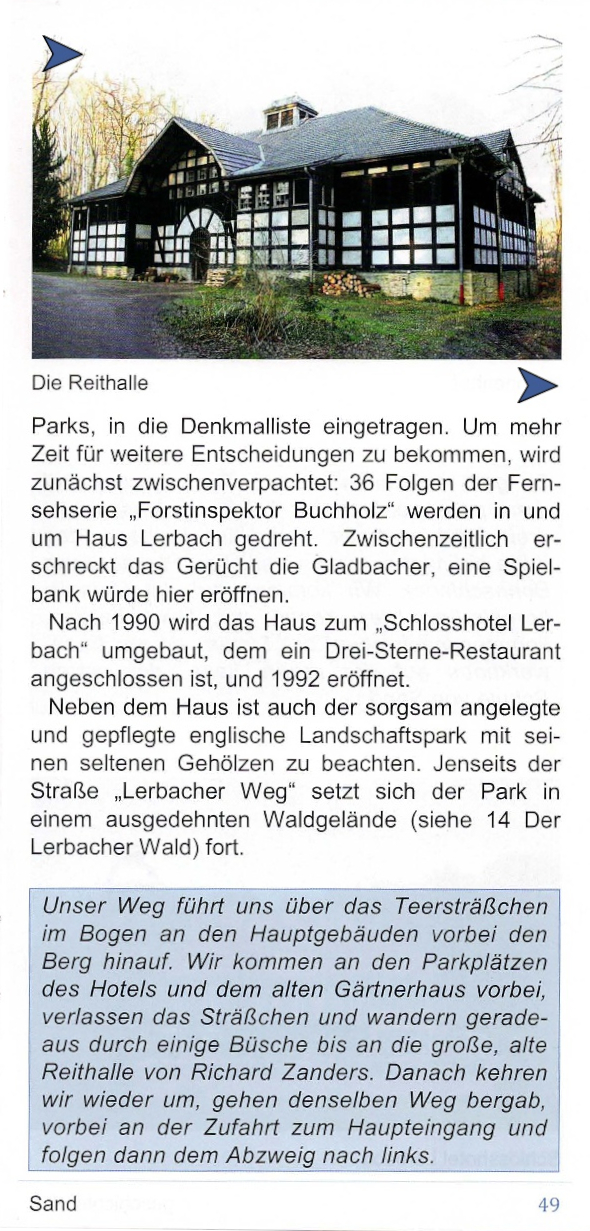geschichte.pfad
Historischer Wanderweg Sand
von Manfred Dasbach und Udo Harler
Kapitel 16
Haus Lerbach
Seiten 44 - 50
Download der kompletten Broschüre
"geschichte.pfad Historischer Wanderweg Sand"
mit englischen Texten

|
Already in 1826 the old knight’s castle that had been repeatedly rebuilt was a damp, cold and musty place. The heroic priest J.P. Ommerborn who in that year took up his ecclesiastical post refused to move into the decrepit Wiedenhof which had been the home of all his predecessors from about 1350. But the moated castle that he rented instead was also damp and not very comfortable. |

|
|

|
|

|
|

|
|

|
|

nach oben
| vorheriges Kapitel | Übersichtskarte | nächstes Kapitel |
Mit freundlicher Unterstützung durch
